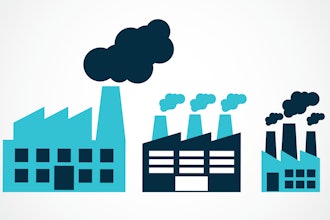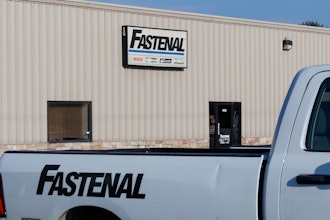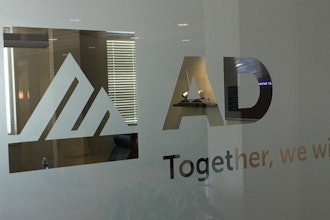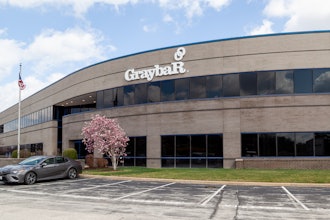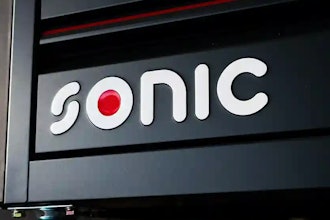Richard Thorne, Vice President of the North American division of Kimberly-Clark Professional, discusses “The Healthy Workplace Project*” which aims to integrate Kimberly-Clark’s products with a wellness program in workplaces across the globe as well as “The Safe Workplace Project*”, which takes Kimberly-Clark’s intellectual property around safety programs to the consumer. These initiatives are helping companies lower employee absenteeism rates and create healthy, safe and cost-effective solutions. Thorne discusses the origins of these programs and why they have been so successful with both employers and their employees.
“The whole market, whether it’s the industrial distribution market or the paper distribution market, has actually weathered the storm during the recession because people need our products every single day. To a certain extent, in these categories we’ve not been impacted in the same way as others, particularly markets like capital goods have, because we are a consumable good and people need us every day.
However, the need in today’s economy for people and companies that have been hit by the economic downturn is not for more innovative products, but more innovative services. The drive from our end-using customers and our distributor partners is to have a better understanding of what constitutes value for our consumer in their workplace.
What we’re trying to do at Kimberly-Clark is work with our partners and our end-users in our target markets, trying to understand the higher order need that we need to address. An example: we have traditionally played a major role in washroom products, but we’ve actually seen the clear underlying need from our customer is wellness and engagement for their employees, so we are turning the conversation away from a hand towel that dries more effectively or a softer bathroom tissue that works better and toward a solution that is a process. A hand soap that is creamier actually doesn’t resonate with our customers. What they want is actual solutions and products that help their employees be more effective in the jobs that they are doing, so The Healthy Workplace Project* is all about leveraging that facility’s current supply budget and turning it into a work and wellness engagement program. The effect is that it helps reduce employee absenteeism.
The question that is really keeping human resource managers up at night is “How do I keep my employees healthier, more productive and safer in the workplace?” And that is where we’re driving all of our innovation going forward, around this theme of exceptional work places – how do we help create exceptional workplaces that are healthier, safer, and more productive, because fundamentally we are in the people business. It is still as true today as it was fifty years ago: people are and remain an employers’ most valuable asset. I don’t think it is trite, I think it is an absolute truism. We have to make work places work more today than we have ever needed. If we look at the workplace that we are working in today, you have downsizing and “right-sizing”—whatever the right word is—the days of actually having extra people to pick up the slack if someone is gone are history. Keeping people engaged and healthier is very important to businesses, because if those people aren’t there, or they are there and are a little bit under the weather, the burden of their work falls on others. That is really the higher order need that we are aiming for from an office perspective: how we as companies keep our employees healthier and more engaged.
Many of our earlier adopters of The Healthy Workplace Project* were our distributor partners who saw the value of the program for their own employees, in addition to the opportunity to sell the program to their customers.
If we come out of the workplace and think more holistically around industrial workplaces like manufacturing environments, other platforms that we are going after are things like safer and more productive work places. We have a program called The Safe Workplace Project*, for example, which is about taking Kimberly-Clark’s own intellectual property built around its own safety programs to the consumer. We are a world class safety company in our own right—one of the safest in the world to work for and we have one of the lowest incident rates in the world of any company, and specifically within our operating environment, the paper industry. Typically that is one of the high risk industries in which to work. The big hydra-pulpers are like big washing machines that mash everything up, they run over 60-70 miles an hour. There is a lot of opportunity in a paper manufacturing facility for people to actually have accidents in the workplace. We have reduced our incident rate to one of the lowest in the industry and we are very safe and we’re taking all that knowledge and experience that we have and are bundling it up into a program that we can take to our small- and medium-sized customers to help them be a safer and more productive workplace. We know GE and Ford and Siemens and people like that are going to have their own programs, but a place like ‘Richard Thorne Manufacturing Company’ can’t afford a fulltime safety manager, can’t really keep up to date with all the latest OSHA requirements. Kimberly-Clark can, andcan bring that program to our end-users, our partners, and we can provide that program in a number of different forms up to and including our safety products that help you implement a safer workplace.
That’s how we are beginning to think about truly bringing new value to our customers. It’s not about selling a towel that is 5% more absorbent or a soap that is 2% more luxurious, it’s about creating programs that look to higher value needs around health safety or productivity.
The meat of these programs is helping people understand why safety is important to them, helping them put into place protocols and systems that help them be safer. These programs can be in the form of proper safety compliance, it can be posters in the workplace that can encourage people to think about safety, it can be the processes we have used to actually engage our workforce in the safe environment that we’ve got. At the end of the day, unless it starts with the people it’s not going to be successful. You can’t just tell people to be safer. You have to help people understand why it is important to them and how they can be safer and the benefit that has to everybody. Because fundamentally you go to work to work, you don’t go to work to have an accident.
This project resonates the strongest with both end-users and distributors that sell on our behalf into the marketplace. Many of our earlier adopters of The Healthy Workplace Project* were our distributor partners who saw the value of the program for their own employees, in addition to the opportunity to sell the program to their customers. You are already buying many of the products that you use in The Healthy Workplace Project*; you are just leveraging them to actually drive greater wellness and greater engagement. There are very clear studies that show the higher the engagement, the less absenteeism you have and the more productive you are as a company, and, consequently the more profitable as a company. It is an element that might not have resonated years ago, but today’s workplace is a healthy engaged workplace. Our workers are not so comfortable about you coming in if you have a heavy cold or the flu. We are more aware of how germs are transmitted to each other and this greater awareness causes people to feel uncomfortable. The days of being a hero and coming in and working against all odds and feeling really under the weather but coming in anyway are over. Now employers are beginning to say ‘No. We would rather you didn’t come into the office. We would rather you work from home if you are feeling under the weather.’ With modern technology we can do that, most of us can work from home. Companies are saying ‘please don’t come in,’ because the effect of you being ill can be passed onto a number of different people.
From our perspective, it benefits the employer and employee. For the employer, we hope it improves their engagement and reduces their absenteeism. For the employee it is also beneficial, because if you are part of The Healthy Workplace Project* and it stops you getting just one cold, the saving of one co-pay on a doctor’s visit or the saving of the cost of a single prescription, that is worth something to employees. In a world where benefits are being cut, this is an opportunity for you to introduce a new benefit to an employee which is of low cost-or no cost-to what you are already spending in that area and that is one of the things that resonate with employers. It’s got the social side, the employee side, but it’s also got some hard economic side that resonates with the people who hold the budgets.”







